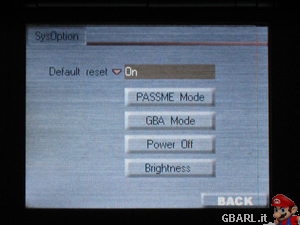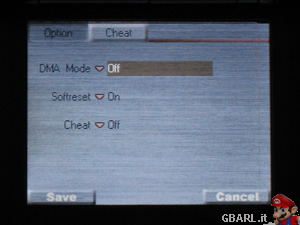Benvenuto Visitatore ( Log In | Registrati )
 Thursday 31 January 2008 - 12:57 Thursday 31 January 2008 - 12:57
Messaggio
#1
|
|
 Fanatic GBA/NDS Gruppo: Membri Messaggi: 985 Iscritto il: Fri 24 August 2007 - 11:45 Da: Chioggia (VE) Utente Nr.: 20.904 Feedback: 0 (0%) |
Quick Links Homepage: www.ndstt.com Our heartfelt thanks to Ultragames for providing the sample. The Nintendo DS flashcard's scene is undeniable mature: all the big players gave their best, creating extremely refined solutions with ever more "collateral" features, thanks to the almost complete knowledge of Nintendo's gaming hardware. Neverthless, a new brand would occasionally join the match: this is how Team TT introduces itself, releasing its very first product, a simple and low-cost Slot 1 flashcard aptly named DSTT. Here we are again at our workbench, ready to squeeze 'till the end this new flash kit, unveiling its secrets, strong and weak points; in our review every curiosity you have will be fulfilled. Introduction & Features Before starting, it's best to clarify that, no matter the now widespread rumors, this flashcard isn't absolutely related to the -deservingly- famous R4 Revolution, already reviewed on this site and currently powering many of your DS'es. It's indeed assembled in the same factory that gave birth to the aforementioned flash kit, yet the DSTT is a completely different product, to the point that it's also marketed, along with a few accessories, as the Top Toy DS, a Neoflash product. However, the software that powers the card is, partially or completely, derivated from the R4 OS: the Action Replay cheats database, for instance, is fully compatible as long as you don't use an encrypted one. Having debunked this myth, we can now begin our review by placing the TT in the same vein as the R4 and M3 DS Simply, a Slot 1 unit marked by ease of use and mainteinance, identical to a standard issue Nintendo cartridge and with virtually enormous storage capabilities granted by high-capacity microSD's. The similarities with said brands are absolutely obvious: this is positive though, considering this design's prerogatives. Furthermore, the operating system is easy to use and completely customizable, by now a fairly standard feature. But let's now take a look at the features breakdown, as declared by the manufacturer:
Whether this is truly a candidate for the R4 throne or a passenger on the train for oblivion, we'll find out in our review. -------------------- Release List EURO e USA aggiornata settimanalmente:
http://www.gbarl.it/index.php?showtopic=41974 |
|
|
|
 |
Risposte
 Tuesday 5 February 2008 - 12:18 Tuesday 5 February 2008 - 12:18
Messaggio
#2
|
|
 Fanatic GBA/NDS Gruppo: Membri Messaggi: 985 Iscritto il: Fri 24 August 2007 - 11:45 Da: Chioggia (VE) Utente Nr.: 20.904 Feedback: 0 (0%) |
GUI & System Software Lett's now take a closer look at the software side of this flashcart. Keep in mind that you can very well opt to use the NeoFlash version of the OS, which is absolutely identical minus the customized skin. Being capable of acting as a third-gen Passcard, after the health and safety screen you'll be immediately redirected to the DSTT main menu, with a wait of roughly four to five seconds. Whether you like this feature or not, it's your choice, neverthless even the blasoned Supercard DS ONE follows the same behavior. The boot sequence is actually made of two separate phases: first there's a microD check, followed by the OS and skin being loaded into memory; ROM listing, cheats and savegames loading follow right after. As complex as it might sound, it's actually pretty useful should the need for troubleshooting arise. The top screen shows two info boxes, displaying the game icon, name, size (note that it's the filesize, not the retail cartridge's), internal ID and the date of the last savegame, while the latter is empty, with indications within the sourcecode that it can be used to display game-specific notes. On the bottom right corner, the current software revision is displayed. The bottom screen displays a simple file browser, with a configuration button and file counter on the upper part. It offers a pretty standard visualization, with every file ordered by name and columns displaying the size and icon aswell; as shown in the picture above, just under the name a set of several icons is displayed, whose explanation is as follows.
General configuration: to be honest, we wonder what exactly is there to configure, as the only real option is enabling soft reset by default for each game; everything else is just a set of buttons for booting a Slot 2 card in DS (PASSME Mode) or GBA mode (GBA Mode), switching off the system and adjust the LCD brightness, given you're using a DS Lite or DS Classic v5 (a shortcut for this feature, the L shoulder button, has been added in firmware revision 1.08). Oddity of a few features aside (seriously, the power button is not that difficult to reach...), we would've preferred something giving the end-user slightly more control over the card's behavior. The "barebone" feeling also stretches to the game specific submenu, which is made of just three settings:
The latter can also be managed via a few in-game shortcuts introduced with the 1.08 system update, namely L+R+START+UP (on) and L+R+START+DOWN (off), although single cheats still have to be chosen beforehand by tapping the Cheat button found in this submenu, whereas X and Y respectively mass-activate and mass-deactivate the entire cheats list for the selected game. The codes are standard Action Replay ones and can be easily added and managed with the R4 Cheat Code Editor; we want to remind you that, although the DSTT cheating subsystem has been reverse-engineered from the R4's, databases encrypted for the latter will prove useful only if you wish to experience a system crash. Oh, and don't forget to save your changes via the eponymous button on the lower left of the touch screen! Skinning: as we've come to expect, it's easier done than said. The graphics are divided into small, self-explanatory files, with a .ini config file for basic CSS-style editing of text and borders. Everything you need is Photoshop (or Paint, why not) and the HEX code for your favorite color. Yet we have to complain for the complete lack of a skin selector: whenever you'll feel like installing a new one, you'll be forced to overwrite or rename the default one. In short, this TTMenu hasn't quite convinced you: we appreciate the attempt of using a proprietary OS instead of a customized Moonshell, as with the latest Supercard and EZ products, but it still lacks the flexibility and features of such elaborate flashcarts. To be honest, everything screams of "rip-off": game information are stored in an internal database, akin to what the old DS Link did (whereas most of it rivals extract them from the ROM), DMA mode has always been a key point of Supercard models prior to its adoption by other manufacturers, and everything else has plain been reverse-engineered from an old R4 system software. Keep in mind: it works, doing its job without complaining and without too much hassle, but that's where a few other flaws kick in. True, we might be asking for too much from a sub-30€ card, but we can't drive away the thought of more advanced and complete solutions, let alone that dčją vu feeling all the features borrowed from the R4 gave us. -------------------- Release List EURO e USA aggiornata settimanalmente:
http://www.gbarl.it/index.php?showtopic=41974 |
|
|
|
Inserisci in questo messaggio
 JohnVS [REVIEW] DS-TT Thursday 31 January 2008 - 12:57
JohnVS [REVIEW] DS-TT Thursday 31 January 2008 - 12:57
 JohnVS Inside the Box
The SDA plastic envelope is now ... Friday 1 February 2008 - 15:24
JohnVS Inside the Box
The SDA plastic envelope is now ... Friday 1 February 2008 - 15:24
 JohnVS Getting Started
When it comes to setting up the D... Monday 4 February 2008 - 10:49
JohnVS Getting Started
When it comes to setting up the D... Monday 4 February 2008 - 10:49
 Evrain Compatibility and Performance
After so much talkin... Wednesday 6 February 2008 - 22:01
Evrain Compatibility and Performance
After so much talkin... Wednesday 6 February 2008 - 22:01
 Evrain Final Thoughts
It's time to write down our fin... Thursday 7 February 2008 - 15:38
Evrain Final Thoughts
It's time to write down our fin... Thursday 7 February 2008 - 15:38  |
1 utenti stanno leggendo questa discussione (1 visitatori e 0 utenti anonimi)
0 utenti:

|
Versione Lo-Fi | Oggi è il: Tue 1 July 2025- 17:24 |









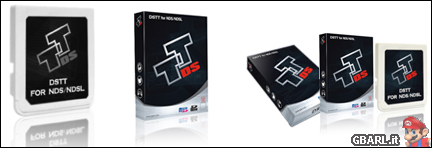






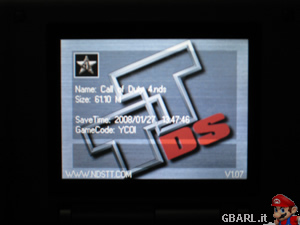
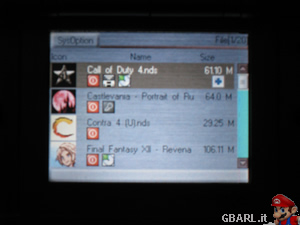
 - Soft reset enabled
- Soft reset enabled - Direct Memory Access enabled
- Direct Memory Access enabled - Download Play fix
- Download Play fix
 - Cheats available and enabled
- Cheats available and enabled - Additional options available (also by pressing SELECT)
- Additional options available (also by pressing SELECT)